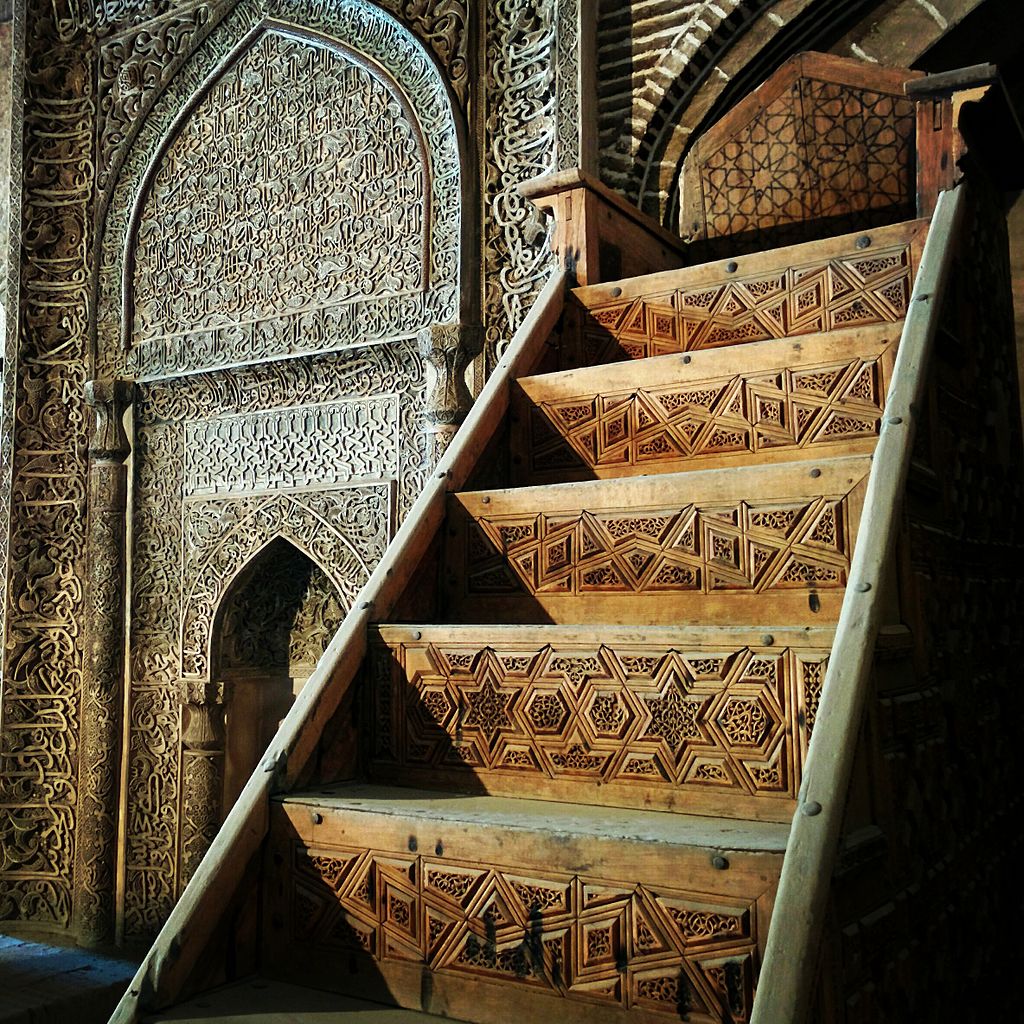Table of Contents
Isfahan Jame Mosque, also known as Jame Atiq Mosque or Juma Mosque, stands as a testament to the rich architectural heritage of Iran. This grand mosque, located in the city of Isfahan, holds a significant place in the country’s history and cultural landscape. It is revered as one of the most prominent and awe-inspiring structures in the Islamic world.
With its origins dating back to different historical periods, Isfahan Jame Mosque showcases a remarkable fusion of architectural styles and influences. The mosque’s construction spans centuries, incorporating elements from the Dilmian, Seljukian, Agh Quyunluha, Mozafarian, Ilkhanan, Timurian, Safavid, and Qajar eras.
However, among the numerous architectural marvels within the mosque, one feature stands out with its exceptional beauty and artistic grandeur – the Uljaytu Mihrab. This masterpiece of stucco art represents a pinnacle of creativity and craftsmanship in Islamic art and architecture.
The Uljaytu Altar, also referred to as the Uljaytu Altar, holds a special place within Isfahan Jame Mosque. Its intricate stucco work showcases a stunning display of flower motifs and intricate inscriptions, making it an extraordinary example of the artistry that flourished during the mosque’s construction.
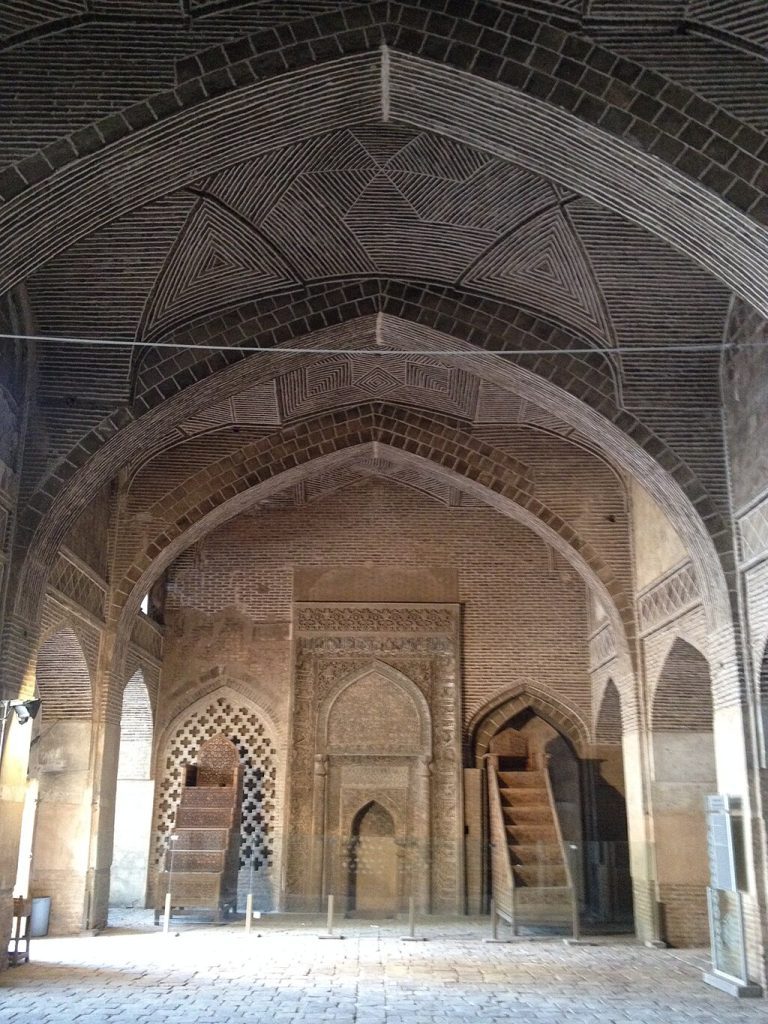
The significance of the Uljaytu Altar extends beyond its exquisite beauty. It serves as a memorial to Sultan Mohammad Khodabande Uljaytu, one of the Ilkhanid kings who embraced the Shiite religion. The construction of this altar immediately following his conversion to Islam adds a layer of historical and religious importance to its already captivating presence.
As visitors enter the Isfahan Jame Mosque and witness the splendour of the Uljaytu Altar, they are transported to a realm where art, faith, and history converge. It is a place where the magnificence of Islamic architecture takes center stage, leaving spectators in awe of the intricate details, harmonious designs, and the profound sense of devotion and spirituality that emanates from the Altar.
Join us on a journey to explore the Uljaytu Altar and delve into the rich tapestry of Isfahan Jame Mosque. Witness the legacy of architectural excellence and immerse yourself in the captivating beauty that reflects the pinnacle of Islamic art and craftsmanship.
Unveiling the Uljaytu Mihrab of Isfahan Jame Mosque
Journey through Time
The Uljaytu Mihrab of Isfahan Jame Mosque takes us on a captivating journey through history, tracing its origins back to the illustrious Ilkhanid period. During this era, under the reign of Sultan Muhammad Khodabande Al-Jaytu, the construction of the mihrab began, leaving an indelible mark on the architectural landscape of Isfahan Jame Mosque.
The Ilkhanid period, known for its cultural and artistic achievements, witnessed the flourishing of Islamic art and architecture. It was a time when master craftsmen and skilled artisans pushed the boundaries of creativity to create awe-inspiring structures. The Uljaytu Mihrab stands as a testament to the exceptional artistic vision and craftsmanship of this period.
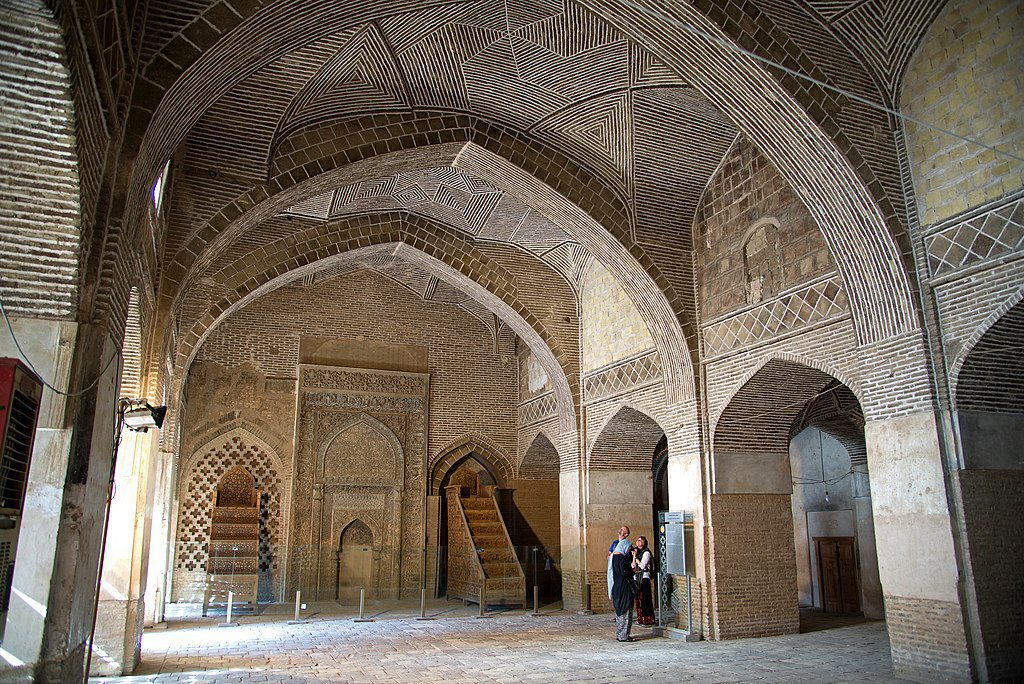
Construction of Uljaytu Altar during the Ilkhanid Period
During the reign of Sultan Muhammad Khodabande Al-Jaytu, in the year 710 AH (1310 CE), the construction of the Uljaytu Mihrab took place. This period marked a significant chapter in the history of Isfahan Jame Mosque, as the Sultan and his learned minister, Muhammad Sawi, played instrumental roles in its development.
The Ilkhanid rulers, while adhering to the tenets of Islam, also embraced architectural innovations from their diverse cultural influences. The Uljaytu Mihrab, with its intricate stucco work and attention to detail, showcases the fusion of artistic styles and techniques that were prevalent during this period.
Distinctive Features and Specifications of Uljaytu Altar
The Uljaytu Altar boasts a unique set of characteristics that set it apart as an architectural masterpiece within Isfahan Jame Mosque. Its craftsmanship and design captivate the eye and evoke a sense of wonder. Let’s explore the distinctive features and specifications that make this mihrab truly remarkable.
Artistic Excellence and Craftsmanship of Uljaytu Altar
The Uljaytu Mihrab stands as a testament to the highest level of artistic excellence and craftsmanship achieved during the Ilkhanid period. The intricate stucco work adorning the mihrab exhibits exceptional attention to detail and skill. Delicate flower motifs, intertwining arabesques, and precisely carved inscriptions adorn its surface, showcasing the mastery of the artisans who created this masterpiece.
Dimensions and Architectural Elements
The Uljaytu Mihrab impresses not only with its artistic beauty but also with its impressive dimensions. It spans a height of over sixty meters and boasts a width of thirty meters, making it a truly monumental structure within Isfahan Jame Mosque. The mihrab is intricately integrated into the mosque’s architecture, with two small columns flanking the arched recess, connecting to the top with a sharp-pointed arch. Two long columns further enhance the visual grandeur, surrounding the smaller columns on either side.
Prominence among Altars in Iran
Among the many altars found across Iran, the Uljaytu Mihrab holds a place of prominence. Its unique design, exceptional craftsmanship, and historical significance make it stand out as a cherished architectural gem. The smoothness and subtlety of the plasterwork, combined with the rich symbolism of the inscriptions, elevate the Uljaytu Mihrab to a level of distinction within the Islamic art and architectural landscape.
The Uljaytu Mihrab’s prominence within Isfahan Jame Mosque serves as a testament to the enduring legacy of the Ilkhanid period and its impact on the architectural heritage of Iran. As visitors marvel at its grandeur, they are transported back
Immersed in Art and Inscriptions
Aesthetic Delights
The Uljaytu Altar of Isfahan Jame Mosque mesmerizes visitors with its captivating beauty and exquisite plasterwork. The intricate details and artistic finesse of the altar’s design make it a true masterpiece of Islamic art.
Exquisite Plasterwork and Intricate Motifs
As one gazes upon the Uljaytu Altar, they are greeted with a symphony of delicate plaster motifs that adorn its surface. The craftsmanship and attention to detail are awe-inspiring, showcasing the skill of the master artisans who dedicated themselves to creating this magnificent piece of art.
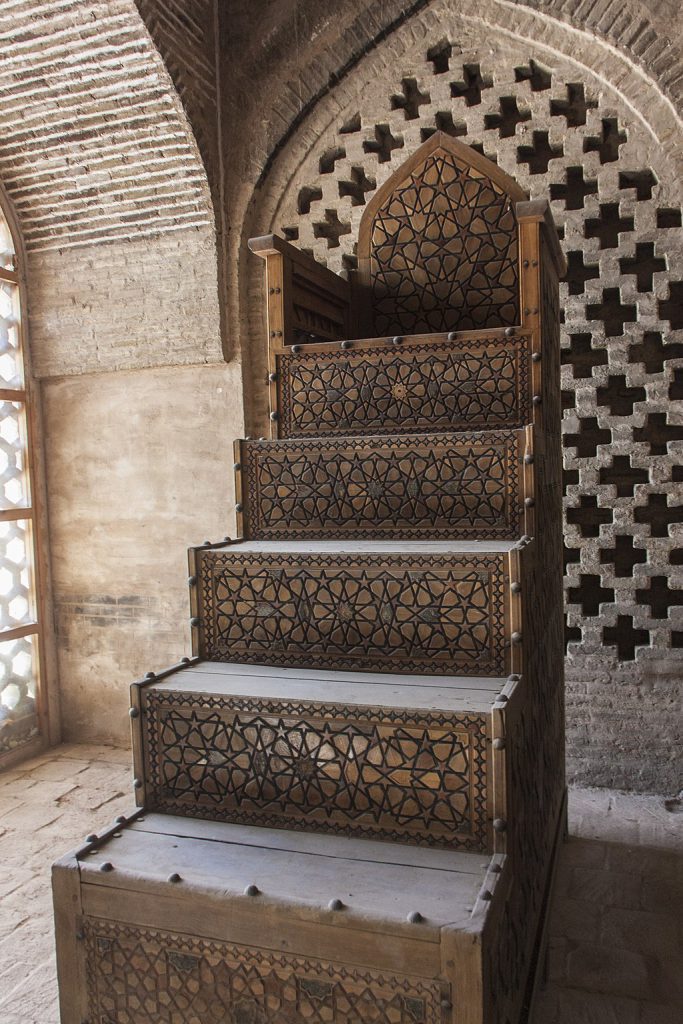
Floral designs, featuring intricately carved petals and leaves, grace the surface of the altar. These motifs, reminiscent of nature’s beauty, symbolize the divine harmony and the eternal cycle of life. Additionally, interwoven plant motifs, with their precise and geometric patterns, create a sense of visual rhythm and balance.
The combination of these motifs, skillfully executed through plasterwork, results in a mesmerizing display of artistry that truly captivates the senses. Each intricate detail tells a story, allowing visitors to experience the beauty and grandeur of Islamic art in its purest form.
Messages from the Past
Beyond its aesthetic splendor, the Uljaytu Altar carries within it a rich tapestry of inscriptions that offer a glimpse into the spiritual and historical significance of the mihrab.
Inscriptions Reflecting Faith and History
Inscribed within and around the mihrab are passages from the Quran and hadiths, symbolizing the profound connection between Islamic faith and the physical space of worship. These inscriptions serve as reminders of the eternal messages and teachings embedded within the walls of Isfahan Jame Mosque.
Significant verses from the Quran, such as Surah Nisa verse 59, which emphasizes obedience to God and the Prophet, resonate with worshippers and visitors alike. The inscriptions also highlight hadiths attributed to revered figures of Islamic history, conveying their wisdom and guidance for believers.
These inscriptions create a powerful atmosphere of reverence and devotion within the mosque. They serve as a testament to the spiritual journey undertaken by those who visit, reminding them of the shared heritage and the enduring teachings of Islam.
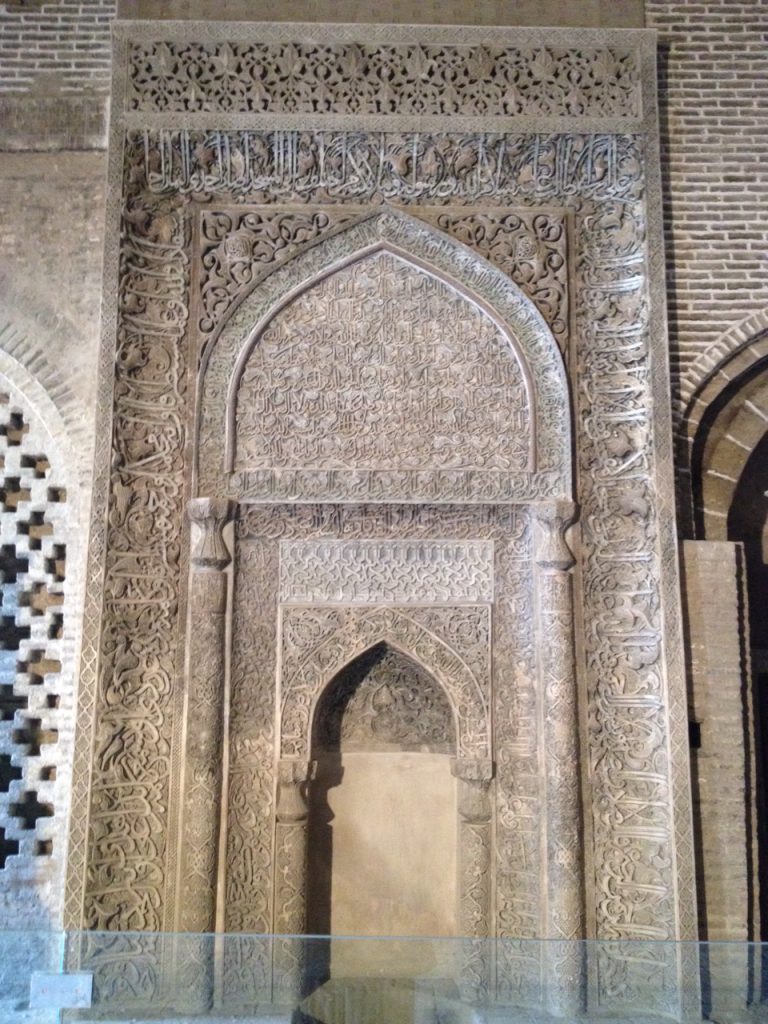
As visitors stand before the Uljaytu Altar, they are enveloped in the beauty of the plasterwork and inspired by the profound words etched into its surface. The artistry and inscriptions harmoniously converge, creating a sacred space where the visual and the spiritual intertwine, inviting contemplation and reflection.
The Uljaytu Altar of Isfahan Jame Mosque transcends mere architectural beauty. It becomes a portal through which visitors can immerse themselves in the profound artistry of Islamic civilization and connect with the spiritual essence that breathes life into this extraordinary place of worship.
Exploring Isfahan Beyond Jame Mosque
Isfahan, a city steeped in history and culture, offers a wealth of attractions and experiences beyond the mesmerizing Isfahan Jame Mosque. As you venture out to explore this enchanting city, prepare to be captivated by its rich heritage and vibrant atmosphere.
Must-See Attractions near Uljaytu Altar
Isfahan is home to a myriad of must-see attractions that showcase its cultural and historical significance. These landmarks have stood the test of time and continue to leave visitors in awe of their architectural splendor and captivating stories.
Naqshe Jahan Square
At the heart of Isfahan lies Naqsh Jahan Square, a UNESCO World Heritage site and one of the largest squares in the world. Enclosed by breathtaking structures, including the majestic Shah Mosque and the intricate Sheikh Lotfollah Mosque, this square is a testament to the grandeur of Isfahan’s golden age. Stroll along its elegant pathways, soak in the ambiance, and marvel at the architectural magnificence that surrounds you.
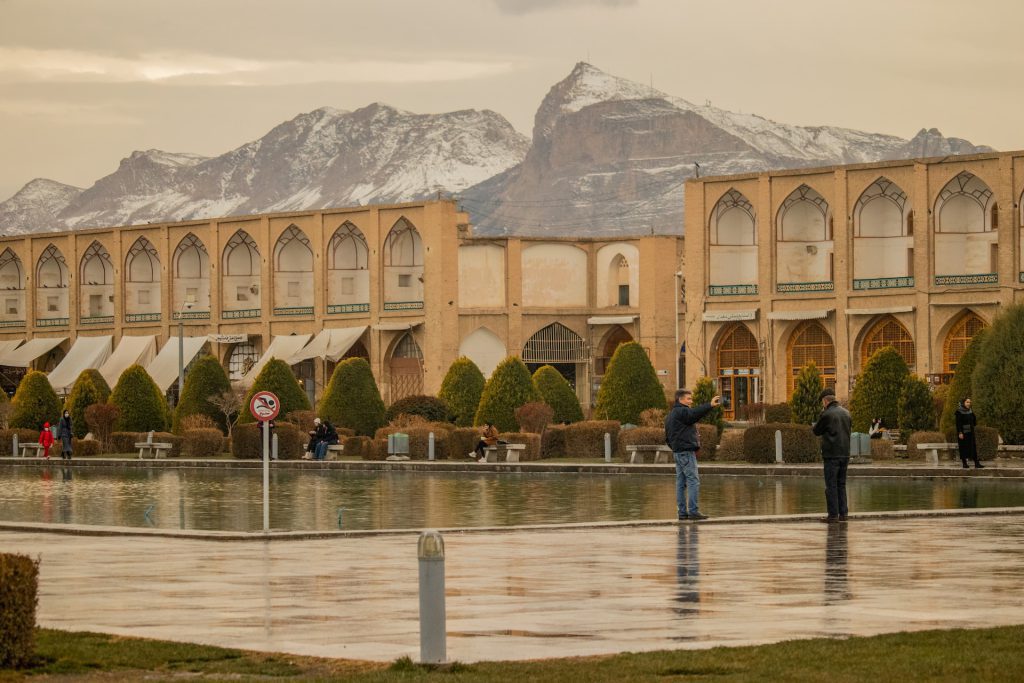
Sheikh Lotfollah Mosque
Step into the mesmerizing Sheikh Lotfollah Mosque, renowned for its stunning tilework and intricate dome. This architectural masterpiece, with its hidden meanings and exquisite craftsmanship, is a sight to behold. Take your time to admire the subtle play of light and color that dances upon the intricate tile patterns, creating an ethereal atmosphere within.
Chehel Sotoun Palace
Nestled amidst enchanting gardens, the Chehel Sotoun Palace beckons you to explore its grandeur. Adorned with graceful columns and mirrored halls, this Safavid-era palace offers a glimpse into the opulent lifestyle of Persian royalty. As you wander through its halls and gardens, immerse yourself in the stories of bygone eras, where art, architecture, and nature converged in perfect harmony.
Immerse in Isfahan’s Charm
Isfahan is not just a city of architectural wonders; it also boasts a unique charm that can be experienced through its local culture and vibrant bazaars. Immerse yourself in the authentic spirit of Isfahan and discover the soul of this enchanting city.
Vibrant Bazaars
Explore the bustling bazaars of Isfahan, where a treasure trove of handicrafts, textiles, and spices await. Lose yourself in the labyrinthine alleys of the Grand Bazaar, where the vibrant colors and intricate designs of Persian carpets and traditional handicrafts beckon. Engage in friendly banter with shopkeepers, practice your bargaining skills, and take home a piece of Isfahan’s rich artisanal heritage.
Local Cuisine and Hospitality
Indulge your taste buds in Isfahan’s culinary delights, as the city is known for its delectable Persian cuisine. Delve into mouthwatering dishes such as Chelo Kabab, Ghormeh Sabzi, and Fesenjan, savoring the flavors that have been perfected over centuries. Don’t miss the opportunity to sip a cup of aromatic Persian tea and experience the warm hospitality of the locals, who are always eager to share their stories and traditions.
As you explore Isfahan beyond Jame Mosque, you will discover a city that effortlessly blends its rich history with a vibrant contemporary spirit. Let the architectural wonders transport you to a bygone era, while immersing yourself in the cultural tapestry that defines Isfahan. Embrace the charm, indulge in the flavors, and create lasting memories as you uncover the hidden gems of this captivating city.
FAQs about Uljaytu Mihrab of Isfahan Jame Mosque
1. What is the Uljaytu Mihrab of Isfahan Jame Mosque?
The Uljaytu Mihrab is a significant architectural feature within the Isfahan Jame Mosque in Iran. It is an intricately designed niche or prayer alcove that indicates the direction of Mecca for worshippers. The Uljaytu Mihrab is known for its remarkable craftsmanship and historical significance.
2. When was the Uljaytu Mihrab constructed?
The Uljaytu Mihrab was built during the Ilkhanid period, specifically during the reign of Sultan Muhammad Khodabande Al-Jaytu, in the year 710 AH (1310 CE). This period marked a significant era in the region’s history, and the construction of the mihrab reflects the architectural and cultural influences of that time.
3. Where is the Uljaytu Mihrab located within Isfahan Jame Mosque?
The Uljaytu Mihrab is situated in the Isfahan Jame Mosque, specifically within the Shabestan, which is located on the north side of the western porch of the mosque. The mihrab rests on the middle wall of the nave and the west porch, serving as a focal point for worshippers and a testament to the historical and architectural significance of the mosque.
4. What are the distinctive features of the Uljaytu Mihrab?
The Uljaytu Mihrab stands out for its remarkable craftsmanship and unique design. It features intricate plasterwork with delicate floral motifs and interwoven plant designs. The plaster surface is smooth and not prominent, setting it apart from other mihrabs of its time. The dimensions of the mihrab, including its height and width, contribute to its grandeur and presence within the mosque.
5. What inscriptions can be found in the Uljaytu Mihrab?
The Uljaytu Mihrab contains inscriptions in various calligraphy styles, such as Thul, Kufi, Muaqd Kufi, and Meshajr Kufi. These inscriptions include verses from the Quran, as well as significant hadiths (sayings of Prophet Muhammad) related to Islamic faith and history. The inscriptions reflect the reverence and spiritual significance attributed to the mihrab.
6. Is the Uljaytu Mihrab open to the public for viewing?
Yes, the Uljaytu Mihrab, along with the Isfahan Jame Mosque, is open to the public for viewing and exploration. Visitors have the opportunity to appreciate the exquisite craftsmanship and historical significance of the mihrab, immersing themselves in the architectural wonders of the mosque.
7. Are there other notable architectural features in Isfahan Jame Mosque?
Yes, Isfahan Jame Mosque is renowned for its architectural splendour. It contains multiple altars and architectural works from different historical periods of Iran, including the Dilmian, Seljukian, Agh Quyunluha, Mozafarian, Ilkhanan, Timurian, Safavid, and Qajar eras. The mosque’s grandeur and historical significance make it a captivating destination for architectural enthusiasts and history lovers.
Unforgettable Archeological Journeys in Iran
Embark on an archeological journey in Iran with ToIranTour. Discover the remarkable ancient wonders that await you, such as Persepolis and Susa. Our customised tours are designed to cater to your archeological interests, ensuring you visit the most significant sites that captivate your curiosity. Let us be your gateway to Iran tours, where you can immerse yourself in the country’s rich history and explore its ancient treasures.
At ToIranTour, we specialise in crafting personalised itineraries tailored to your preferences. Our expert team will create a customised tour that takes you to the archeological sites that fascinate you the most, such as Persepolis, Pasargadae, and Susa. We go beyond just organising tours – our knowledgeable guides will accompany you, providing insights into the historical significance of each site and ensuring a seamless and captivating journey. Let us be your trusted guide as you unearth Iran’s ancient mysteries and create unforgettable memories in the captivating landscapes of Iran’s archeological wonders.
